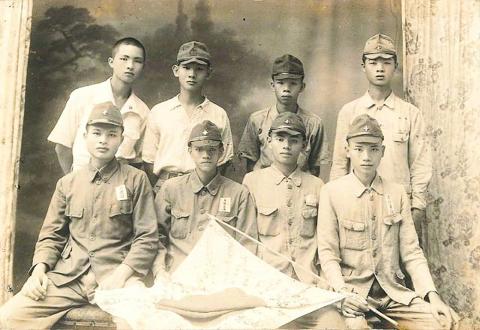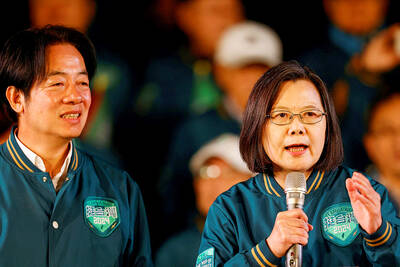Taiwan in Time: Feb. 8 to Feb. 14
If the Japanese hadn’t lost World War II, it is likely that Taipei Mayor Ko Wen-je’s (柯文哲) surname would be Aoyama. And former president Lee Teng-hui (李登輝) would still be officially known as Iwasato Masao.

Photo courtesy of Wikicommons
Historian Shih-shan Henry Tsai (蔡石山) writes in his book, Lee Teng-hui and Taiwan’s Quest for Identity, that Lee’s father was the first one in the family to “Japanize” his name to Iwasato Tatsuo when he served as a policeman.
After the Japanese colonial government announced their policy to allow and encourage Taiwanese to Japanize their names on Feb. 11, 1940 — which was the 2,600th anniversary of the founding of Japan — Lee and his older brother had their names changed too.
“Like other Taiwanese fathers who desired to improve their family’s social and economic conditions, [Lee] decided to take Japanese names for his entire family,” Tsai writes.
This name-change policy was part of the government’s push to Japanize their colonial subjects, a direct result of the country’s imperialist policy that came to a head with its invasion of China in 1937. The goal was to eradicate Taiwanese of their identity and transform them into full Japanese citizens, who, by extension, would be willing to die for the Japanese emperor in battle (about 30,000 Taiwanese died as Japanese soldiers during World War II).
While the name change was optional and was limited to families that were already speaking Japanese and deemed to be proper “imperial subjects,” other changes were mandatory such as the regulation of local performance arts such as puppetry, banning the teaching of Hoklo (also known as Taiwanese) in schools, forced conversion to Shintoism and worship and the abolishment of Chinese-language newspapers.
Historian Ho Feng-chiao (何鳳嬌) writes in an Academia Historica study that some Japanese living in Taiwan opposed the move as it would diminish their superior status and make it harder to distinguish the two groups, and as a result the name change became a policy of “encouragement” only.
Ho writes that people could pretty much choose their own new surname, but four types of surnames were banned: those relating to the Japanese imperial house, any belonging to famous Japanese historic figures, those referring to the original surname’s place of origin in China and “other improper names.”
There were a number of ways to adopt a surname, including breaking up the original surname’s Chinese character into two parts and adopting a Japanese pronunciation, using new Japanese characters to approximate the original surname’s Chinese pronunciation or adopting certain features of their environment such as rice fields, rivers and bridges.
Tsai explains how Lee became Iwasato in his book. Iwa in Japanese means rock, which Tsai says refers to the rocky terrain of Sanjhih (三芝), where the Lee clan resided. Sato is pronounced “li” in Chinese, so in a way the Lees still retained a trace of their original name.
Taiwanese were not enthusiastic about the policy, and despite numerous government incentives, by the end of 1941 only about 1 percent of the population made the change. Many who did were either prominent citizens or those who worked closely with the Japanese or in a Japanese institution, such as public servants and teachers. Like Lee’s father, many also hoped that the name change would provide better educational opportunities for their children.
By the end of 1943, only two percent had followed suit. As a result, the aforementioned restrictions were loosened in 1944, which is when Ko’s grandfather changed his name to Aoyama.
Ho writes that once the Japanese surrendered, many Taiwanese reverted to their old names even before the Chinese Nationalist Party (KMT) arrived to install an official reversal policy.
However, an unexpected result arose. Since all Japanese public and private property were to be confiscated by the new government, officials often couldn’t tell whether the property belonged to an actual Japanese or a Taiwanese using a Japanese name, leading to many land disputes in the early days of KMT rule.

Last week Joseph Nye, the well-known China scholar, wrote on the Australian Strategic Policy Institute’s website about how war over Taiwan might be averted. He noted that years ago he was on a team that met with then-president Chen Shui-bian (陳水扁), “whose previous ‘unofficial’ visit to the US had caused a crisis in which China fired missiles into the sea and the US deployed carriers off the coast of Taiwan.” Yes, that’s right, mighty Chen caused that crisis all by himself. Neither the US nor the People’s Republic of China (PRC) exercised any agency. Nye then nostalgically invoked the comical specter

April 15 to April 21 Yang Kui (楊逵) was horrified as he drove past trucks, oxcarts and trolleys loaded with coffins on his way to Tuntzechiao (屯子腳), which he heard had been completely destroyed. The friend he came to check on was safe, but most residents were suffering in the town hit the hardest by the 7.1-magnitude Hsinchu-Taichung Earthquake on April 21, 1935. It remains the deadliest in Taiwan’s recorded history, claiming around 3,300 lives and injuring nearly 12,000. The disaster completely flattened roughly 18,000 houses and damaged countless more. The social activist and

Over the course of former President Ma Ying-jeou’s (馬英九) 11-day trip to China that included a meeting with Chinese Communist Party (CCP) leader Xi Jinping (習近平) a surprising number of people commented that the former president was now “irrelevant.” Upon reflection, it became apparent that these comments were coming from pro-Taiwan, pan-green supporters and they were expressing what they hoped was the case, rather than the reality. Ma’s ideology is so pro-China (read: deep blue) and controversial that many in his own Chinese Nationalist Party (KMT) hope he retires quickly, or at least refrains from speaking on some subjects. Regardless

Approaching her mid-30s, Xiong Yidan reckons that most of her friends are on to their second or even third babies. But Xiong has more than a dozen. There is Lucky, the street dog from Bangkok who jumped into a taxi with her and never left. There is Sophie and Ben, sibling geese, who honk from morning to night. Boop and Pan, both goats, are romantically involved. Dumpling the hedgehog enjoys a belly rub from time to time. The list goes on. Xiong nurtures her brood from her 8,000 square meter farm in Chiang Dao, a mountainous district in northern Thailand’s